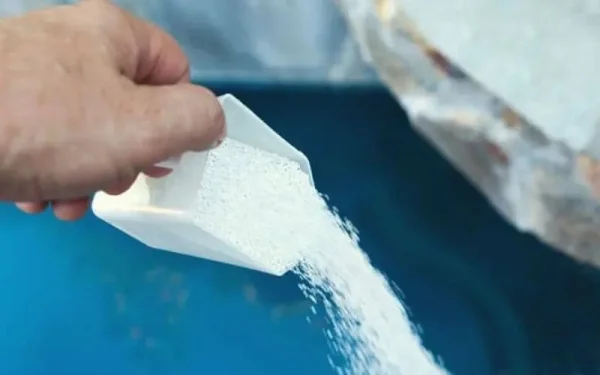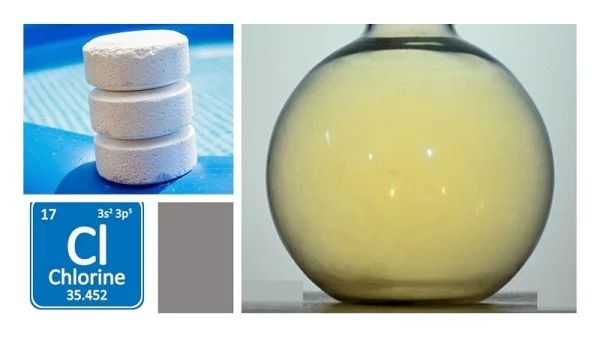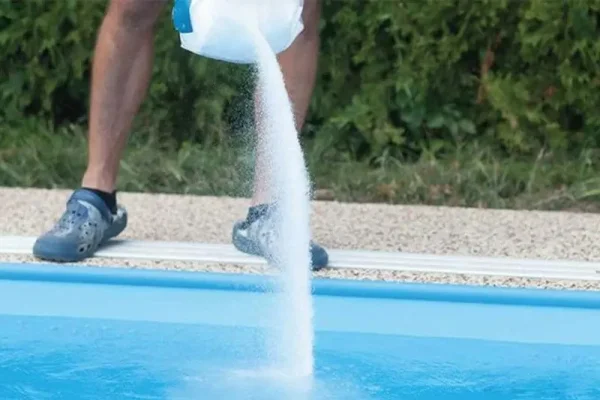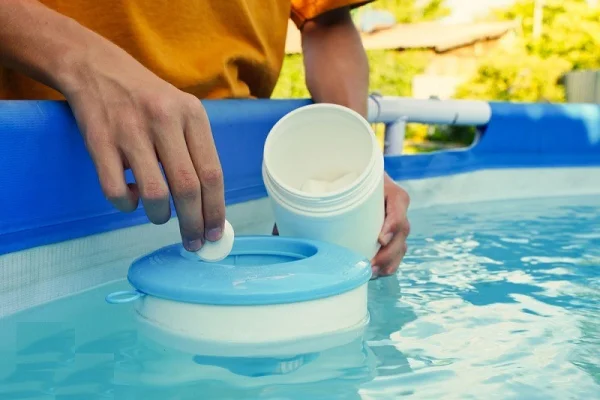
Chlorine is a highly versatile chemical that plays a crucial role in various industries, including the food sector. As a powerful disinfectant and sanitizing agent, chlorine is widely employed to ensure the safety and quality of food products. In this comprehensive article, we will explore the uses of Chlorine in the food industry, the recommended concentration levels, and the important safety considerations to keep in mind when utilizing this chemical.
5 Keys Uses of Chlorine in Food Processing
Chlorine's versatility makes it an essential component in various food industry applications. From sanitizing processing facilities to treating seafood and produce, this chemical compound plays a crucial role in maintaining food safety and quality.
Sanitizing Food Processing Sites
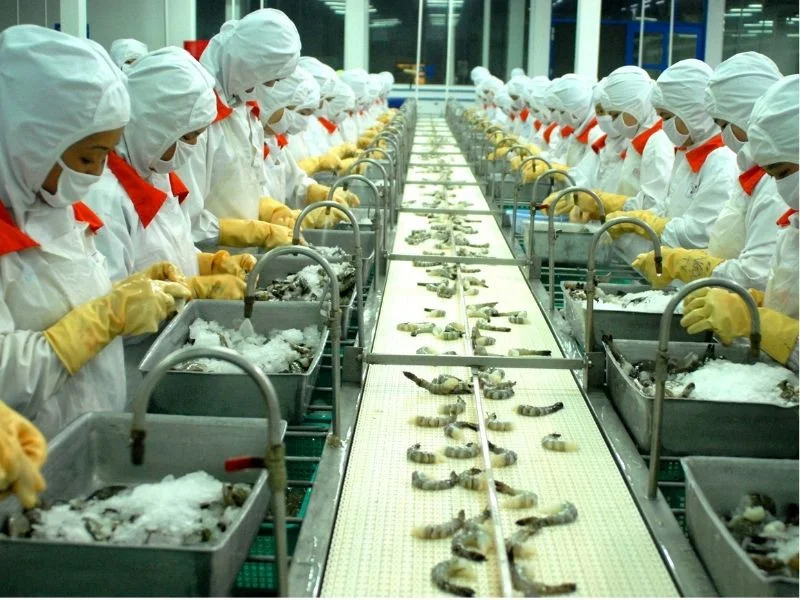
Sanitizing food processing sites
One of the uses of chlorine is as a disinfectant in the food processing industry.The food processing environment is an ideal breeding ground for harmful bacteria and pathogens. Chlorine is recognized as an effective disinfectant that can efficiently eliminate these microorganisms, ensuring a safe and hygienic environment for food production. By using chlorine-based solutions to clean and sterilize food processing equipment, surfaces, and facilities, food manufacturers can mitigate the risk of cross-contamination and protect the integrity of their products.
Seafood Treatment and Disinfection
During the processing of seafood, such as fish and shellfish, it is crucial to maintain a clean and pathogen-free environment. The uses of chlorine are widely applied to disinfect the water used in various stages of seafood processing, including washing, cleaning, and sanitizing. By controlling the chlorine concentration in the water, food processors can effectively eliminate harmful bacteria, viruses, and other contaminants, preserving the freshness and safety of the seafood.
Sanitizing Livestock and Poultry Facilities
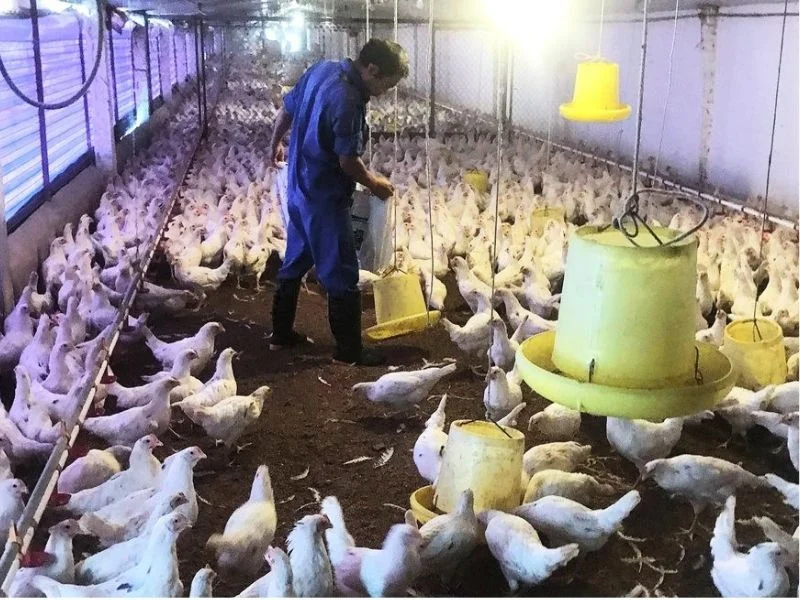
Sanitize the facilities
The rearing and processing of livestock and poultry can also be a source of microbial contamination. Chlorine-based disinfectants, which are part of the broader spectrum of uses of chlorine, are employed to clean and sanitize the facilities, equipment, and surfaces used in these processes. This helps to reduce the risk of cross-contamination and ensure the health and safety of the animals, as well as the final meat products.
Sanitizing Fresh Produce
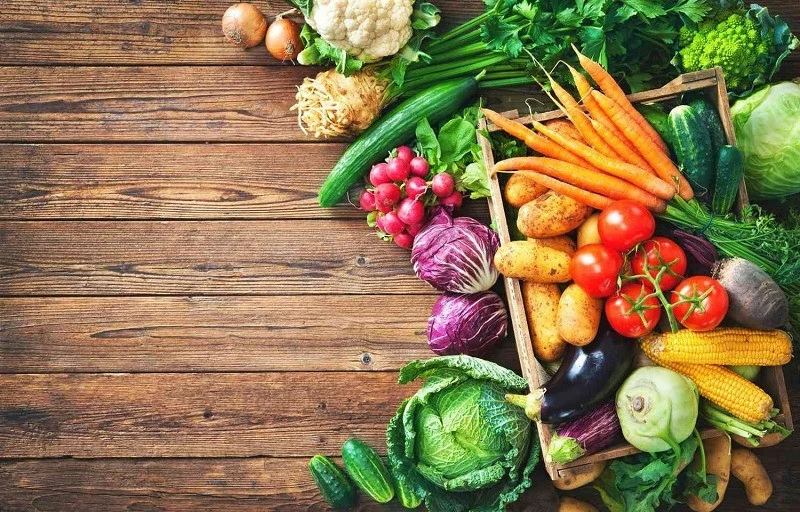
Cleaning fresh vegetables
Fruits and vegetables can harbor various pesticide residues, bacteria, and other contaminants. One of the main uses of chlorine is in the washing and decontamination of fruits and vegetables. Chlorine-based solutions are widely used to wash and decontaminate produce, effectively removing these harmful substances and ensuring the safety of the final products. The recommended chlorine concentration for this purpose is typically around 0.5%.
Sanitizing Restaurants and Supermarkets
Another important use of chlorine is for cleaning and disinfecting in the food service and retail industries. Chlorine-based cleaners and disinfectants can be used to maintain high levels of cleanliness and hygiene in food service establishments, such as restaurants, and retail settings like supermarkets. These chlorine-based products can effectively eliminate odors, sanitize surfaces, and help prevent the spread of foodborne illnesses.
Recommended Chlorine Concentrations in Food Applications
The safe and effective utilization of chlorine in the food industry is guided by recommended concentration levels. According to industry standards, the following chlorine concentrations are considered safe and appropriate for various food-related applications:
Disinfection of Food Processing Sites
For the disinfection and sanitization of food processing facilities, the recommended chlorine concentration is 0.5%. This concentration has been deemed effective in eliminating harmful bacteria, viruses, and other microorganisms that can thrive in the food production environment.
Treatment of Water for Seafood Processing
In the case of seafood processing, chlorine is used to disinfect the water used throughout various stages, such as washing, cleaning, and sanitizing. The recommended chlorine concentrations vary depending on the specific type of contamination:
- For treating parasitic infections, the chlorine concentration should be between 0.1-0.2 ppm (parts per million).
- For addressing bacterial infections, the chlorine concentration should be between 1-3 ppm.
These precise chlorine levels help ensure the elimination of pathogens and the preservation of the seafood's freshness and safety.
Livestock and Poultry Facility Sanitization
Similar to food processing facilities, the recommended chlorine concentration for sanitizing livestock and poultry facilities is 0.5%. This level of chlorine is effective in reducing the risk of cross-contamination and maintaining the health and safety of the animals, as well as the final meat products.
Decontamination fresh fruits and vegetables
Chlorine-based solutions are widely used to wash and decontaminate fruits and vegetables. The recommended chlorine concentration for this purpose is typically around 0.5%. This concentration has proven effective in removing pesticide residues, bacteria, and other contaminants, ensuring the safety and quality of the produce.
It is crucial to strictly adhere to these recommended chlorine concentrations to avoid potential risks or negatively impact the final food products. Overexposure to chlorine or using concentrations that are too low can compromise the effectiveness of the disinfection process and potentially introduce safety concerns.
By following the industry-standard guidelines for the uses of chlorine concentrations, food manufacturers and processors can leverage the powerful disinfecting properties of this chemical while prioritizing the health and safety of their workers, consumers, and the overall food supply.
Safety Measures and Precautions

Ensure the safe while handling Chlorine
When take advantage of all the uses of chlorine in the food industry, it is essential to take several precautions to ensure the safe handling and application of this chemical:
Sourcing Chlorine Products from Reputable Suppliers
Ensuring that chlorine products are purchased from reliable and reputable suppliers such as Dong A Chemical is essential to guarantee quality and proper handling. This helps to mitigate the risks associated with substandard or improperly stored chlorine-based chemicals.
Following Recommended Concentrations
Strictly following the recommended chlorine concentration levels for each use of chlorine is crucial to avoid over-exposure or potential contamination of food products. Exceeding the guidelines could lead to the presence of harmful chlorine residues in the final food items.
Refining Handling Methods
Providing personal protective equipment (PPE), such as gloves, goggles, and respirators, to workers handling chlorine-based products is essential. Proper training on the safe handling, storage, and disposal of these chemicals is also critical to protect the health and safety of food industry personnel.
Ensuring Adequate Ventilation
Maintaining proper ventilation in areas where chlorine-based products are used is crucial to minimize the risk of respiratory issues or other health concerns for workers. Adequate airflow helps to dilute and disperse any potentially harmful chlorine vapors.
Meeting Regulatory Obligations
Staying up-to-date with the latest regulatory requirements and guidelines regarding the uses of chlorine in the food industry is essential to ensure compliance and mitigate any legal or safety risks. Food producers and processors must be vigilant in adhering to these regulations to protect both their businesses and the consumers they serve.
Conclusion
Uses of Chlorine in the food industry demonstrate its indispensable value in maintaining the safety, quality, and hygiene of food products throughout the entire supply chain. From sanitizing processing facilities and ensuring seafood safety to disinfecting livestock and poultry operations, as well as effectively cleaning produce and food service environments, chlorine's versatility is unparalleled.
By understanding the recommended concentration levels and following strict safety protocols, food producers and processors can leverage the benefits of chlorine while prioritizing the well-being of their workers and the ultimate consumers. As the industry continues to evolve, the responsible and informed uses of chlorine will remain a cornerstone of upholding the highest standards of food safety and hygiene.
Related Articles
The Ultimate Guide to Chlorine Powder for Pool Water Treatment
Maintaining a clean pool is crucial for the health and enjoyment of swimmers. One of the most ...
Top 3 Applications of Chlorine Powder
Chlorine powder , also known as calcium hypochlorite (Ca(OCl)2), is a widely used disinfectant ...
Unveiling Liquid Chlorine: Uses and Safety
Liquid chlorine , also known as chlorinated water or hypochlorite solution, is a versatile chemical ...
Effective Ways to Neutralize Chlorine in Water
Chlorine is a chemical element belonging to the Halogen group, and it has widespread applications in ...
Chlorine 70: The Powerful Disinfectant
Chlorine is a powerful chemical with strong oxidizing and disinfecting properties. It is widely used ...
8 Key Uses of Chlorine Tablets
Chlorine tablets are a widely used chemical in various industries, particularly in the field of ...

